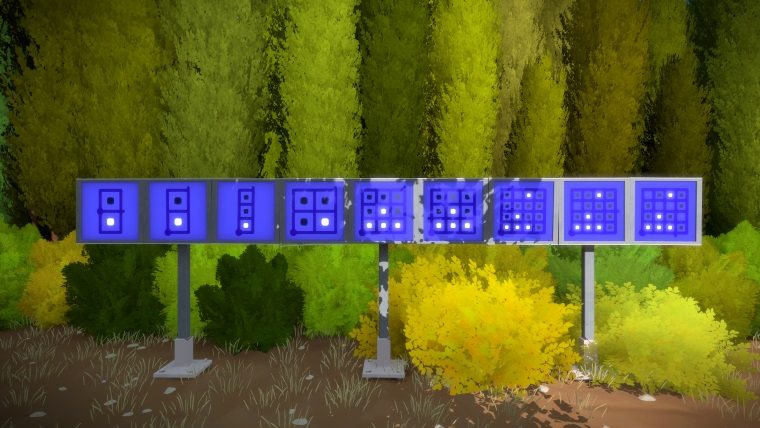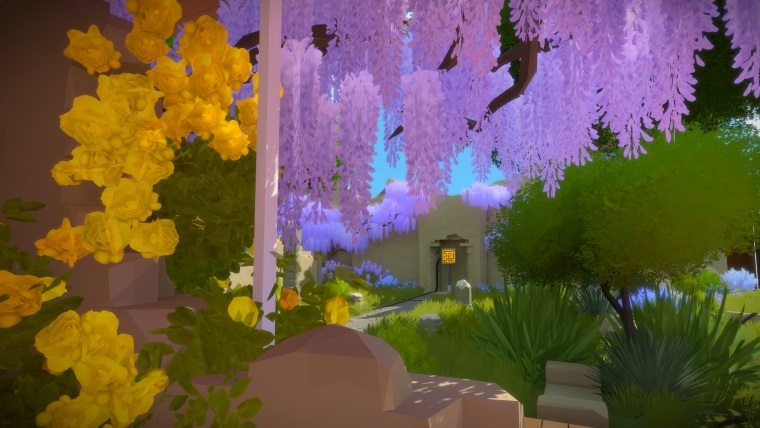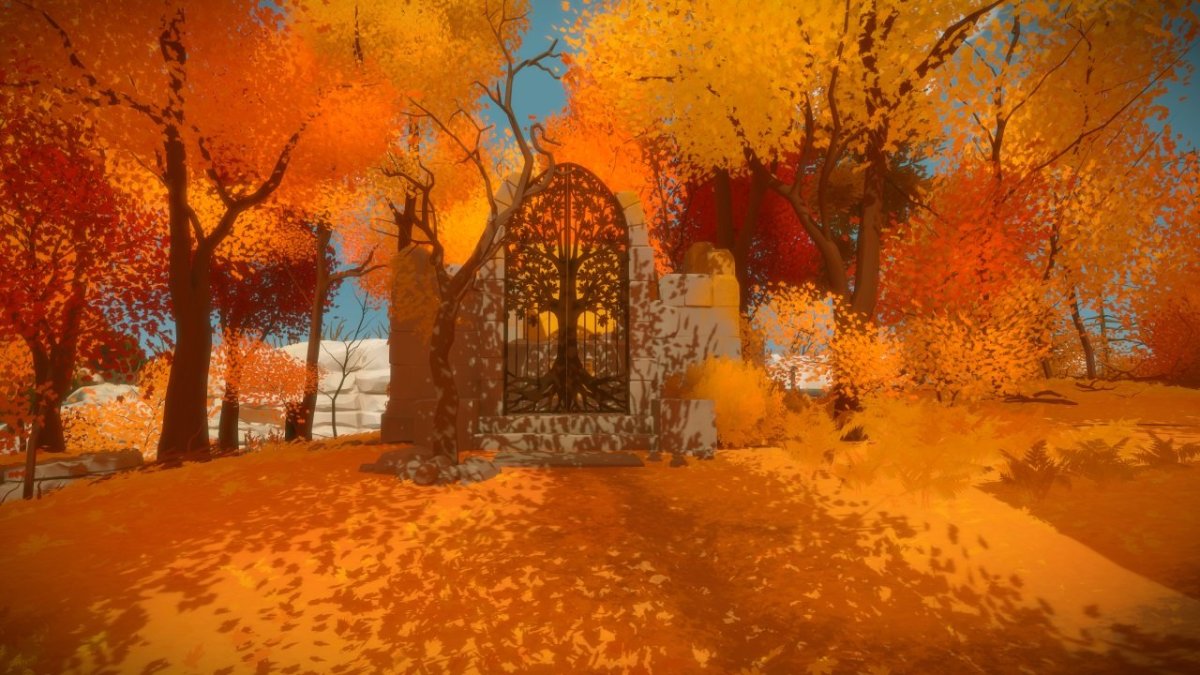Gamers have been arguing for years that their favorite entertainment medium should be recognized as art, just as music and movies have been. Most games, from the public’s perspective, are just gory, action filled tripe, but every once in a while video games get a champion for the cause. One such game that achieved this goal was 2008’s Braid. The indie platformer showed not only how gaming mechanics can be innovated upon, but also how story and gameplay can combine into something unique. Now, the creator of that fantastic experience is back with The Witness, showing once again how our favorite form of entertainment can impress in a truly artistic sense.
The Witness has only the barest of story threads running through it. You awake on an island with no idea who you are, why you are there, or really what you should be doing. Yet this lack of story is less a problem, and more of a benefit as players are pushed on based solely on the mystery present in the situation.
The island itself is a key component to The Witness and its great success. Bathed in stark, beautiful colors, the island is both inviting and foreboding as you wander its surface looking for more puzzles to solve, and areas to enter. The overall look of The Witness is impressive, but its the smaller touches that truly take it to the next level.

Light, shadow, perspective, and motion all play a part in crafting a visual presentation that, despite not looking realistic or featuring top of the line effects, is among the best that gaming has to offer. The puzzles provide plenty of surprises themselves, but your surroundings hold many as well, as you spot various elements of the environment that are both beautiful and intriguing in their inventiveness.
With this simple premise The Witness explores game design in a way that few other games have ever come close to achieving
The core of The Witness’ gameplay boils down to the dozens of screens scattered about the landscape. The image displayed on the screens as well as the sounds from them help you to understand what you must do: connect the starting circle to the end goal. At least, that’s how it works early on, with later puzzles adding things that mix up the solution, which you’ll have to figure out each time you encounter a new one. As the game progresses you will repeat this process of confusion, questioning, discovery, and accomplishment over and over again, with increasing difficulty and near endless variation.
This cycle is the core of the experience found within The Witness. Solving puzzles is pretty much all you do in the game, and the puzzle structure is almost always the same, sorting out how to draw a line through a maze to the end. Yet with this simple premise The Witness explores game design in a way that few other games have ever come close to achieving. As you explore the island you will come across puzzles with symbols, colored dots, and other unique elements. Figuring out how these function, and what must be done to complete the puzzle is surprisingly engaging.
You’d think a game with dozens and dozens of similar puzzles would get boring, yet the way it all plays out is amazingly addictive. Players will slowly learn how things work, and as they do they will stumble across new areas on the island, diving deep into its depths to solve puzzles with an end goal of completing enough sections to, well you don’t really know. And yet, most players will continue pushing forward, solving puzzles and figuring out how the mechanics of each new area work.

The sheer joy in figuring out something new cannot be emphasized enough, as The Witness is full of “aha!” moments, both big and small. Through all of this, the game itself never gets in the way. If you are struggling with something, you won’t have a pop up that gives you a hint. You either power through it, or take a break and come back with fresh eyes later on. Entire classes could and likely will be taught about how The Witness shares information with the player, as it uses sight, sound, and subtle pieces of the environment, all to point the player, ever so subtly, in the direction needed for them to figure out the problem on their own.
The Witness does so much right, and excels in so many areas, yet it is not a perfect experience, and it is certainly not one that every gamer will enjoy. For one, there is no real conflict in the game, it is just you and a bunch of very similar puzzles. Even your movement is limited, with no ability to jump, or simply drop from ledges. This can be frustrating, as you must walk around rock formations, or down paths from the top of cliffs, but it makes sense in that players need not worry about how to get somewhere. They can either walk there, or they aren’t meant to be in that location.
Players who are looking for a more varied, or action-filled experience will likely find The Witness disappointing. Even ones who enjoy its core concepts might take issue with the overall lack of drive, via either narrative or gameplay. There is kind of a story to be found here, but it is quite subtle, almost meditative in nature, and it won’t develop quickly or form something cohesive. Along the same token, completing puzzles doesn’t reward you with anything, besides the unlocking of more puzzles and a very tenuous push toward an ethereal endgame. Aside from the chime of a Trophy or Achievement unlock, completing even an entire series of puzzles has very little reward for players to enjoy, so those who don’t already find the puzzle gameplay compelling might become tired of finishing a tough challenge only to be greeted with even more of the same.

And yet, when The Witness does work, which is quite often, it works extraordinarily well. Players who become engaged in its mysterious world will do so with gusto, pushing themselves from puzzle to puzzle, looking for any tiny hint as to the solution of the next one. And then when these players stumble across some hidden secret, some tiny piece of narrative or extra content, they will become even more driven to keep going. It’s a fascinatingly simple, yet endlessly addictive formula, and if you are at all captivated by it, you will likely be so fully and completely.
The Verdict
The Witness is a perfect example of video games as art. It presents a beautiful, fascinating world to explore, but also gives players great gameplay opportunities. And the way it does so, by not intruding on the experience and allowing the player to figure things out for themselves, is truly admirable. However, those who are looking for a more traditional experience, and players who require more reward for their effort might find The Witness to be either boring or overly challenging.











Published: Jan 29, 2016 02:48 pm